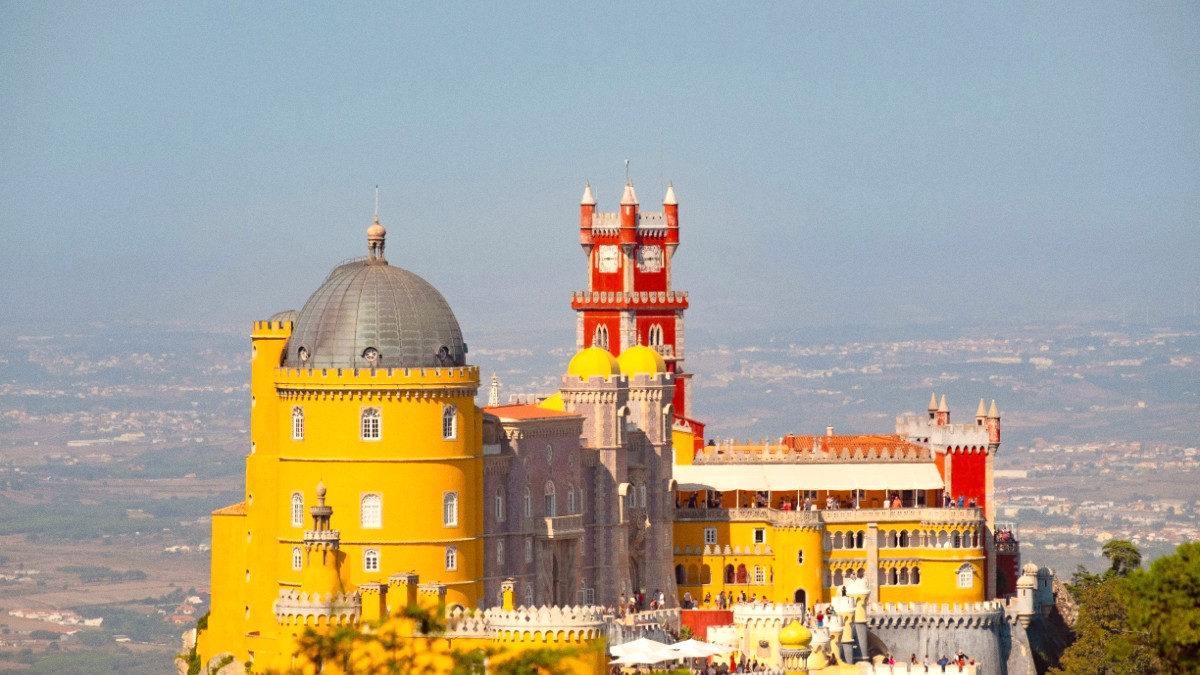
Lisbon, Portugal
Portuguese cuisine features fresh seafood, quality meats, olive oil, garlic, and herbs. It is often hearty and comforting, rooted in generations of traditional recipes.
Sintra, known for its sweet pastries, draws from the wider Portuguese culinary tradition, especially that of the Lisbon region.
Codfish (bacalhau) is the national dish, prepared in countless ways. Other seafood includes sardines, octopus, clams, and prawns.
Pork, beef, and chicken are common. Olives, potatoes, rice, and vegetables like cabbage and kale are staples.
Paprika, piri-piri, saffron, and cinnamon (in sweets). Garlic, olive oil, fresh cilantro, and bay leaf are recurring flavor foundations.
Small, round cheese tarts. Slightly sweet, with a delicate texture and a hint of cinnamon.
Find at: Fábrica das Verdadeiras Queijadas da Sapa, Piriquita.
"Pillows" – rectangular puff pastries filled with a sweet, creamy egg and almond mixture. Delicate and delicious.
Find at: Piriquita.
Shredded codfish mixed with thinly chopped fried potatoes, onions, and scrambled eggs, garnished with black olives.
Iconic custard tarts with a crispy, flaky pastry shell and creamy, caramelized custard. A must-try.
Common in autumn and winter, sold by street vendors.
For an elevated culinary experience.
Numerous options in Sintra's historic center and São Pedro de Sintra.
Affordable and local food experiences.
Increasingly available. Many traditional dishes are meat or fish-based. Learn phrases like "Eu sou vegetariano/vegan".
Awareness is growing. Communicate needs clearly. Cross-contamination remains a risk in smaller kitchens.
More common in Lisbon, but some tours may feature food experiences in Sintra.
Colares wine region vineyards offer tours and tastings.
Check local calendars for events, especially São Pedro market.
Dining in a historic palace setting offers unique ambiance.
A simple, often rice-flour-based muffin, usually served with coffee.
A sweet bread roll topped with a coconut and egg mixture, often eaten for breakfast.
While Portuguese cuisine dominates, some international options (Italian, Asian, Indian) exist, especially in tourist areas.
Roasted octopus, with olive oil, garlic, and "punched potatoes."
Traditional Portuguese green cabbage soup, often with thinly sliced collard greens and chouriço.
Do not leave Sintra without trying a Queijada or Travesseiro. These pastries are a delicious part of Sintra's identity.
Explore local wineries and vineyards for tours and tastings. A different cultural and culinary experience awaits.
Check local calendars for food-related events and markets, especially the São Pedro market for seasonal specialties.
Always check for "Prato do Dia" (Dish of the Day) in mid-range restaurants for good value lunches, often including a main course and drink.